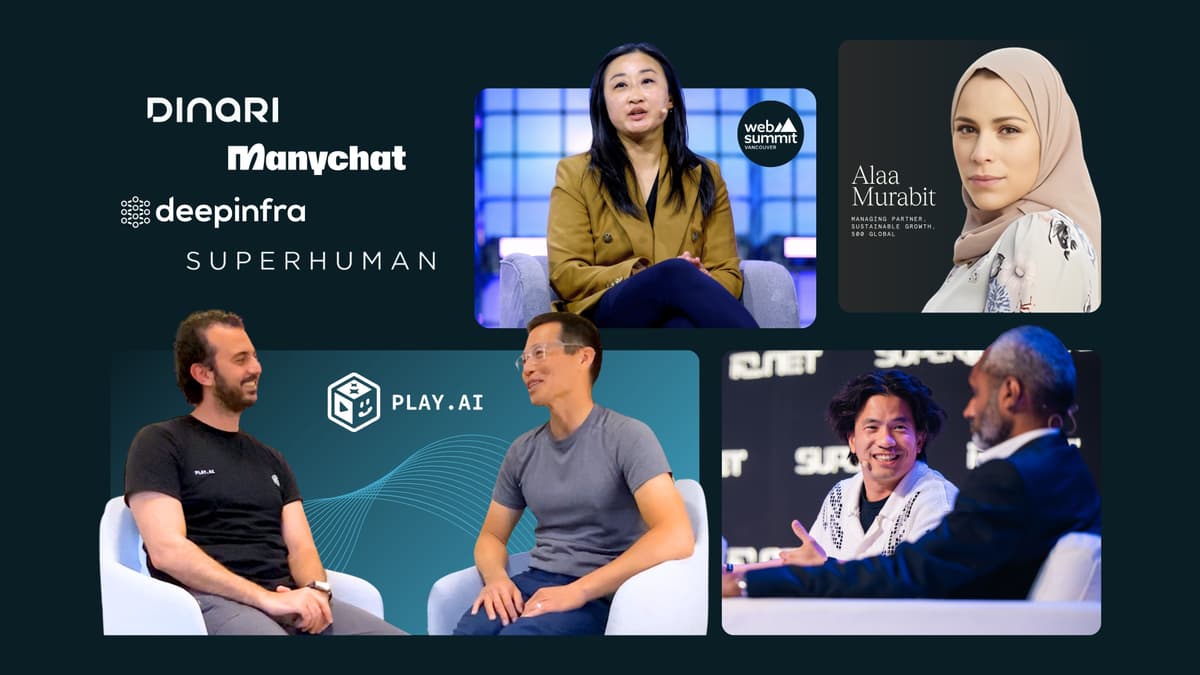2020.12.17

500 Global Team

This interview has been edited and condensed for clarity
Vijay Rajendran: Welcome everyone to today’s quick Innovation Coffee Break. I’m Vijay Rajendran, Director of Innovation and Partnerships at 500 Startups’ Ecosystems Group. Every week, I’ll be joined by startup founders, VC investors and corporate innovators to share their diverse experiences and views.
I’m really excited to be joined by Carlos Kuchkovsky. Carlos is chief R&D and Technology Officer, New Digital Businesses at BBVA, one of the world’s leading banks, a board member of Hyperledger, Intaba, Alastra, and the European quantum strategy board.
Carlos is passionate about how exponential technologies and data are redefining society business and economics by allowing reliable interaction models. This moment he’s researching how to combine deep tech and new value creation models, as well as web 3.0, digital assets, open finance, distributed private and explainable AI, quantum technologies, among other key emerging trends.
Happy to have my friend and general renaissance man, Carlos Kuchhkovsky here today.
Carlos Kuchkovsky: Well, thank you Vijay. It’s a pleasure to be here.
Vijay Rajendran: And looking forward to digging into some of these topics. So, Carlos maybe to get started. We can talk a little bit about the idea of creating value from science and business together.
Carlos Kuchkovsky: Of course. What we’re trying to do is to combine the market trends, social evolution and also the evolution in new deep tech and science to try to figure out the value that will be created in this [new] decade.
We analyze how the volume in the last decade moved from monoliths to what we all know now: the multi-sided platforms [e.g. “GAFA”]. Now we are researching how technology that started in the last decade, like Bitcoin, Blockchain, the evolution of Quantum Computing, and the second wave of technologies like Artificial Intelligence among others, are creating “new” platforms. We are imagining and trying to define how today’s major internet platforms will operate with this technology.
Vijay Rajendran: That’s super cool, but who do you think is going to be the first to do this or is someone already, you know, making this interdisciplinary approach work?
Carlos Kuchkovsky: There are two emerging trends that are accelerated by this value creation model. One is data identity, where we are going to need data identity to go to work, to travel to other countries, We are also seeing how governments are creating code, applications and other data, but in an open source way because they are collaborating between countries and regions. So I think this is accelerating a new vision for platforms and new value creation and more important new distribution of value.
Vijay Rajendran: In the last year, Apple and Google announced that they were going to be working on the project to help identify people and whether or not they had exposure to COVID-19.
I don’t think a few months or certainly like years ago, you would have expected these two companies to come together and work on a problem like this. Do you think we’ll see more options for collaboration between firms?
Carlos Kuchkovsky: Yes, I think that Google and Apple [for contact tracing] are a really good case. I suppose other bigger corporates, big technology companies, and governments may be able to combine far more with this. For example, in Spain and other countries, we have seen how we can collaborate to incorporate [Covid] applications in our area.
Vijay Rajendran: It certainly requires an open way of working and innovating without any boundaries, and one of the things I’ve always admired from time we worked together is how collaborative you are with different organizations and partnerships with that. For example, the work you’re doing with M.I.T. on something called social physics.
Carlos Kuchkovsky: Because we think that one of the most important values for people is to be in control of or keep our own data. The concept of how this [social physics] works it to try to analyze interaction between properties, in this case between humans with the other things, but without the need to analyze the underlying message.
Vijay Rajendran: Let’s jump to quantum computing. A lot of people would ask, why does a bank care about quantum computing?
Carlos Kuchkovsky: Well, finance has traditionally been the industry that started experimenting first with special technologies, technologies that allowed you to compute better, faster, and with more accuracy. In that case, quantum has the promise (but also the demonstration) of a more secure, unbreakable communication system. We put the focus on computing algorithms.
There are three things, faster speed, calculating with more accuracy, and calculations that were impossible before this moment. For a bank, with these three things we can solve a lot of problems around optimization. In finance, we have a lot of optimization problems. For portfolio optimization, what’s the best way to improve incomes in your portfolio whiler reducing the risk. Or simulation, what is the best way to use a Montecarlo to simulate these scenarios to price something?
We’re also super excited about how we’re combining this with more research that’s a key element in our strategy, sustainability for financial inclusion around reduction of carbon intensity. How can we reduce carbon emissions and help companies reduce their carbon emissions while staying profitable?
We can apply and combine more sustainability and emissions data to these optimization models so we can have better, more accurate prediction models. Not only make profits, but reduce risk, while taking care of the sustainability challenges we face.
Vijay Rajendran: I love that, think about profits, think about sustainability, think about how to generate unique value for four people. That takes us to our final question and proverbial final sip of coffee for the session. And that is around digital assets, something you alluded to earlier. What’s so interesting to you about open finance?
Carlos Kuchkovsky: Well, we mentioned a bit about digital assets. We used to have paper assets, we moved to assets on our computer, and now we have assets that are programmable, immutable, digital. Another angle of open finance is the network. People talk about Bitcoin and other networks, but other folks in finance are excited about how we can use a combination of these different networks, use them with compliance tools, creating an unstoppable new race for financial infrastructure in the US and Europe.
But it’s also something we can develop for people outside the financial system. The cost is sometimes too high to reach them. Now the promise is, anyone with a mobile phone can create an account, store value in a low cost way, and serve and sell value to others. We can start helping this society that can bet more than 2-3 billion people and start providing them with financial services in a low cost, fair way.
Vijay Rajendran: Very good. Carlos, we’re going to have to leave it there. Thank you so much for joining me for today’s Innovation Coffee Break.
Carlos Kuchkovsky: Perfect. Thanks a lot, Vijay.



